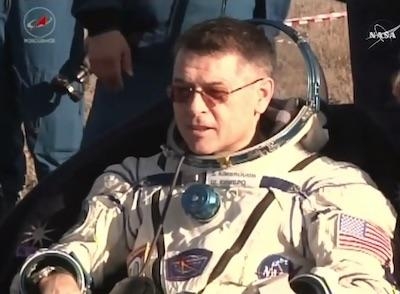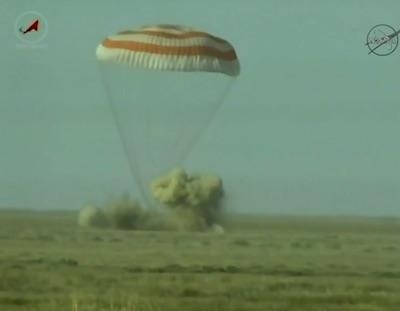Landed In Kazakhstan Monday Morning
Expedition 50 Commander Shane Kimbrough of NASA is among three crew members from the International Space Station (ISS) who returned to Earth Monday, after 173 days in space, landing in Kazakhstan at approximately 7:20 a.m. EDT (5:20 p.m. Kazakhstan time).

Also returning were Flight Engineers Sergey Ryzhikov and Andrey Borisenko of the Russian space agency Roscosmos. The three touched down southeast of the remote town of Dzhezkazgan in Kazakhstan.
While living and working aboard the space station, the Expedition 50 crew members contributed to hundreds of experiments in biology, biotechnology, physical science and Earth science aboard the world-class orbiting laboratory. For example, the Microgravity Expanded Stem Cells investigation had crew members observe cell growth and other characteristics in microgravity. Results from this investigation could lead to the treatment of diseases and injury in space, and provide a way to improve stem cell production for medical therapies on Earth.
The Tissue Regeneration-Bone Defect study, a U.S. National Laboratory investigation sponsored by the Center for the Advancement of Science in Space (CASIS) and the U.S. Army Medical Research and Materiel Command, studied what prevents vertebrates, such as rodents and humans, from regenerating lost bone and tissue, and how microgravity conditions impact the process. Results will provide a new understanding of the biological reasons behind a human’s inability to regrow a lost limb at the wound site, and could lead to new treatment options for the more than 30 percent of the patient population who do not respond to current options for chronic, non-healing wounds.

During his time on the orbital complex, Kimbrough ventured outside the confines of the space station for four spacewalks. During the first two in January, Kimbrough installed adapter plates and hooked up electrical connections for six new lithium-ion batteries on the space station. The new lithium-ion batteries and adapter plates replaced nine nickel-hydrogen batteries used on the station to store electrical energy generated by the station’s solar arrays. Kimbrough also took part in two spacewalks in March, completing a variety of tasks including work to disconnect and then setup Pressurized Mating Adapter-3 following its robotic move, install two upgraded computer relay boxes on the station’s truss and install shields and covers on several external station locations.
The returning crew members also welcomed four cargo spacecraft delivering several tons of supplies and research experiments. Orbital ATK’s Cygnus spacecraft arrived to the station, shortly after the crew in October, delivering supplies to the orbiting laboratory. The sixth Japanese H-II Transfer Vehicle launched to the station in December and delivered new lithium-ion batteries that were installed during a combination of robotics and spacewalks. A SpaceX Dragon cargo resupply spacecraft arrived to the station in February. A Russian ISS Progress cargo spacecraft also docked to the station in February.
Kimbrough now has spent 189 days in space on two flights. Borisenko now has 337 days in space on two flights. Ryzhikov logged 173 days in space on his first flight.
Expedition 51 continues operating the station, with NASA astronaut Peggy Whitson in command. Along with her crewmates Oleg Novitskiy of Roscosmos and Thomas Pesquet of ESA (European Space Agency), the three-person crew will operate the station until the arrival of two new crew members. NASA’s Jack Fischer and Fyodor Yurchikhin of Roscosmos are scheduled to launch Thursday, April 20 from Baikonur, Kazakhstan.
(Images provided with NASA news release)
 NTSB Final Report: Rutan Long-EZ
NTSB Final Report: Rutan Long-EZ ANN FAQ: Turn On Post Notifications
ANN FAQ: Turn On Post Notifications Classic Aero-TV: ICAS Perspectives - Advice for New Air Show Performers
Classic Aero-TV: ICAS Perspectives - Advice for New Air Show Performers ANN's Daily Aero-Linx (06.28.25)
ANN's Daily Aero-Linx (06.28.25) Aero-News: Quote of the Day (06.28.25)
Aero-News: Quote of the Day (06.28.25)




